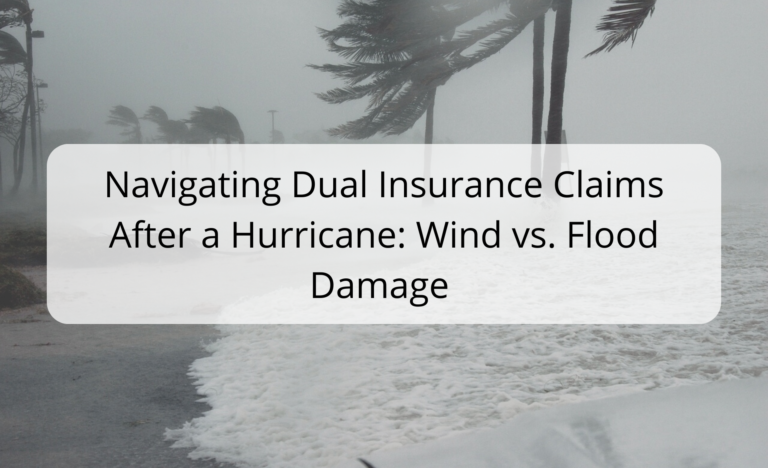The aftermath of a hurricane is a time of upheaval and uncertainty, especially when your property has suffered damage. In the wake of such a disaster, it’s common for property owners to face the daunting task of filing insurance claims. However, when a hurricane brings both wind and flood damage, the complexity of the situation increases significantly. Navigating dual insurance claims requires a clear understanding of the distinctions between wind and flood damage, as well as strategic steps to ensure a fair and comprehensive settlement.
The Dichotomy of Wind and Flood Damage
Hurricanes are a two-fold threat, unleashing both destructive winds and torrential rains that lead to flooding. These two types of damage are typically covered by separate insurance policies: wind damage falls under standard homeowner’s insurance or commercial property insurance, while flood damage necessitates a separate flood insurance policy. This division can create confusion and challenges for property owners when their property is hit by both forms of devastation.
Differentiating Wind and Flood Damage
In the aftermath of a hurricane, the landscape of destruction can be a bewildering sight. Understanding the differences between wind and flood damage is pivotal to initiating the right claims and ensuring accurate assessments.
Wind Damage: Wind damage is often characterized by the destructive force of the hurricane’s winds. This can include torn-off roof shingles, compromised siding, shattered windows, and structural vulnerabilities. The immediate impact of wind can leave a trail of havoc that demands swift repairs to safeguard the property’s integrity.
Flood Damage: Flood damage, on the other hand, stems from the relentless downpour and subsequent inundation of water. This can result in a host of issues, from submerged interiors and waterlogged possessions to compromised electrical systems and potential mold growth. Unlike wind damage, the aftermath of flooding often lingers, necessitating comprehensive restoration efforts to mitigate long-term structural and health hazards.
Recognizing these distinctions is vital not only for the accuracy of your claims but also for implementing effective damage control strategies. Identifying the sources of damage – whether wind-driven debris or surging waters – guides your emergency responses and influences the direction of your recovery efforts. It’s important to note that documenting each type of damage separately is crucial when pursuing insurance claims, as distinct evidence aids in the claims process and ultimately contributes to your property’s full restoration.
Insurance Policies: Wind vs. Flood
Wind and flood damage are typically covered by separate insurance policies for a good reason – each type of damage requires distinct considerations. Wind insurance, often included in standard policies, accounts for the damage caused by strong winds and the projectiles they hurl. Flood insurance, however, is a separate policy provided by the National Flood Insurance Program (NFIP) or private insurers. It specifically covers damages resulting from water inundation, whether from storm surges, heavy rainfall, or overflowing bodies of water.
Navigating Dual Claims: Key Steps
- Report Damage Promptly: As soon as it’s safe to do so, contact both your wind and flood insurance providers to report the damages. Prompt reporting is crucial to kickstart the claims process and expedite your recovery.
- Document Thoroughly: Document the extent of both wind and flood damage meticulously. Take photographs and videos from multiple angles, capturing the details of each type of damage separately. This documentation will be vital when presenting your claim.
- File Separate Claims: While it’s tempting to file a single combined claim, it’s important to file separate claims for wind and flood damage. Keep communication clear and organized to avoid confusion.
- Understand Coverage: Carefully review your wind and flood insurance policies to understand their coverage limits, deductibles, and exclusions. Being informed about your coverage will help you manage expectations and negotiate effectively.
- Collaborate with Adjusters: Engage the services of both a wind damage adjuster and a flood damage adjuster. These professionals are experienced in assessing their respective types of damage and can provide accurate estimates.
- Provide Documentation: Present the evidence of your damage to the adjusters, ensuring they understand the scope of both wind and flood-related issues. This documentation should include repair estimates, photographs, and any other relevant information.
- Negotiate Fairly: Work closely with both adjusters to negotiate a fair settlement for each type of damage. Having well-documented evidence and a clear understanding of your policies will empower you during negotiations.
- Consider Overlapping Damage: In some cases, damage may overlap – for instance, flooding can cause additional wind-related damage. Communicate these scenarios clearly to your adjusters to ensure all aspects are accounted for.
- Keep Records: Maintain a comprehensive record of all communications, estimates, and documentation related to your claims. This record will help prevent misunderstandings and streamline the process.
The Role of Public Adjusters
In the intricate landscape of dual insurance claims, public adjusters play a critical role. Public adjusters are skilled professionals who advocate for policyholders, ensuring their claims are accurately assessed and fairly settled. Hiring a public adjuster experienced in handling dual claims can alleviate the stress and confusion of navigating the complexities of wind and flood damage.
A Steady Path Forward
As you confront the aftermath of a hurricane’s fury, the complexities of dual insurance claims for wind and flood damage can indeed feel overwhelming. Navigating through the intricacies of policy coverages, documentation, and the claims process requires a steady hand and a clear understanding of the nuances involved.
Remember, while the road ahead may be challenging, you are not alone. Reaching out to experienced professionals like D.A. Lamont Public Adjusters can provide the support and guidance you need during this critical time. Our team of dedicated experts is well-versed in the intricacies of hurricane damage claims, whether stemming from wind or flood.
From comprehensively assessing the extent of damages to meticulously documenting each type of destruction, our aim is to ensure that you receive the maximum compensation your policies rightfully provide. We advocate for you, working to bridge the gap between policyholders and insurance companies, thereby alleviating the burden of the claims process.
At D.A. Lamont Public Adjusters, we pride ourselves on understanding the unique challenges presented by hurricane-related claims. Our commitment to your recovery extends beyond the claims process – we stand by your side as partners in rebuilding and restoring. When faced with the aftermath of a hurricane’s wrath, let us be the beacon of hope guiding you through the intricate terrain of insurance claims. Contact us today to discover how we can help you navigate dual insurance claims, ensuring a smoother and more efficient path to recovery.


